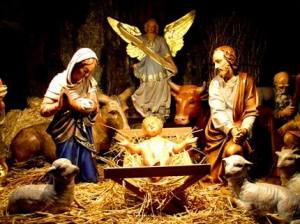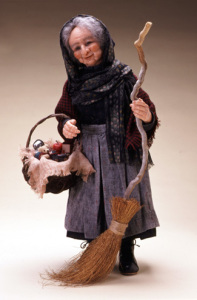La Befana, Zampogniari, and other Christmas Traditions in Italy
Posted on December 18th, 2014 by Anna in Uncategorized | No Comments »
 It should be no surprise that Italy has thousands of years of traditions surrounding Christmas and Advent. As the Italian culture is one that relishes its rituals and superstitions, many of its typical Christmas customs have been honed to a fine art over the years. Perhaps you have even seen some of these adapted into your culture as well.
It should be no surprise that Italy has thousands of years of traditions surrounding Christmas and Advent. As the Italian culture is one that relishes its rituals and superstitions, many of its typical Christmas customs have been honed to a fine art over the years. Perhaps you have even seen some of these adapted into your culture as well.
- The Presepe. The presepe, a sculptural depiction of the birth of Jesus in a stable, has been a common way of telling the story of the Nativity since nearly the beginning of Christianity. However, it was first popularized in the Mediterranean regions by St. Francis of Assisi in the 13th century after a pilgrimage to Bethlehem. Typically, presepes are displayed on the 8th of December, but the manger remains empty until the 24th.
- St. Nicholas and Babbo Natale. Italian children are lucky, and have many different mythical figures bringing them gifts throughout the holidays. St. Nicholas, whose saint day is December 6th, brings fruits, nuts, and small toys to good children who hang up their stockings, while Babbo Natale is the more modern “Father Christmas” who brings presents on Christmas Eve.
- La Befana. A more unique gift-giver is La Befana, an old witch who flies around the world on her broomstick on the night before Epiphany (January 6th), leaving toys for good children and a lump of coal for naughty ones. She dates back to an old Christian legend about a woman who was invited by the Magi to pay homage to the Infant Jesus, but was too busy cleaning her house to go. In penitence, to this day she is still searching for him with her sack of presents.

- Panettone. As iconic to an Italian Christmas as fruitcake is to an English one, panettone is considerably more delicious, and easier on the teeth. It is a sweet, bell-shaped bread filled with candied fruits. Originating in Milan, it is usually enjoyed with hot chocolate or amaretto, and a Christmas dessert is unthinkable without it.
- A Vegetarian Christmas Eve. Like many Catholic cultures, Italians don’t eat red meat on Christmas Eve, as it is a holy day by the Church’s calendar. As such, December 24th is often known as Esta dei Sette Pesci, or “The Feast of the Seven Fishes.” Symbolically, this is thought to stand for the seven sacraments of the church, and popular dishes include cod, clams, calamari, sardines, and eel.
- Zampogniari. A custom peculiar to the Abruzzi region, the zampogniari are public bagpipers and flautists who represent the shepherds who visited the newborn Jesus. They are often joined by children singing traditional carols in exchange for small treats.
No matter what sort of winter holidays you observe, if you know an Italian family you’re sure to be showered with a healthy dose of festive cheer, not to mention lots and lots of delicious food. Express your appreciation by telling them, “Buon Natale!” (Merry Christmas!) or “Buona Festa!” (Happy Holidays!) To learn some more eloquent season’s greetings, take a look at our different Italian courses, or send us an inquiry for more information.




